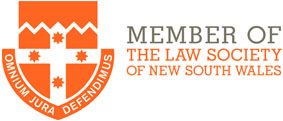There are various types of intellectual property (the general name given to the laws covering trade marks, patents, designs, circuit layouts, plant breeder’s rights and copyright), but the simplest (at least in terms of how and when it is created at least) is copyright.
What is copyright?
Copyright exists in a ‘work’ as soon as that work is created.
People spend time, money and talent in creating ‘original’ works and their efforts are protected by copyright.
Works include:
- literary works - texts, books, poems, screenplays, song lyrics, letters, computer programs etc
- artistic works - drawings, paintings, maps, plans, sculptures, photographs etc
- dramatic works - plays, screenplays and choreography etc
- musical works – musical scores (but not the recording of the music itself)
Protection is also given to ‘subject matter other than works‘, being sound recordings/broadcasts, films/movies, published editions of works etc.
Unlike a patent for example, copyright does not protect ideas or information as such but only the original expression of ideas or information. If it is not original, there is no copyright.
Two people could independently come up with a similar work at the same time. Both would hold copyright on their own works.
Copyright is free and automatic in Australia – there is no need (and indeed no place in which) to register it.
What rights does copyright give?
The Copyright Act 1968 (Cth) and the Regulations made under that Act set out the law in Australia regarding copyright.
Copyright protects the original expression of ideas or information – the work itself. The owner of the copyright owns copyright in the text in a book even though the owner of (an authorised) physical copy of a book owns the physical book itself.
Copyright entitles the holder the exclusive right to publish, reproduce (copy) and otherwise use that work (and to make money from doing so). Using a substantial part of a work without the copyright holder’s permission is an infringement upon that right and the holder can commence a legal action for an injunction to restrain such use, damages or accounting for any profits made from such use etc.
There are exceptions to copyright including ‘personal use’ and use (known as fair dealing) including:
- research or study
- reporting of news
- giving of professional advice
- satire/parody
as well as certain ‘special purposes‘ such as making accessible format copies for persons with disabilities, for educational instruction etc
Overseas copyright is enforced in Australia and reciprocal arrangements exist overseas to protect Australian copyright abroad due to various international conventions. There are treaties in place in some countries only however.
How long does copyright last?
Copyright generally lasts for as long as the person that owns it is alive, plus 70 years (but some shorter timeframes apply to certain works).
Once copyright ends, the work is said to be in the ‘public domain’ – and can be used by anyone.
How to help enforce copyright in a work
If your work is written or able to be viewed such as online or on a screen, you can use the copyright symbol © or (c) on the work, with the author’s name and the date it was created. This symbol serves as notice to the world that you assert copyright in that work and from when.
Using the © symbol is not a requirement to establish or assert copyright however, just a good practice.
Songwriters can register their works through licensing agencies, so fees can be collected and paid for using their songs.
Contractual arrangements regarding copyright and its use can also impose rights and obligations on the parties to it. Copyright can be assigned, licensed or even borrowed against.
Titles, business names and slogans are not protected by copyright (as they are usually too small/unoriginal to be protected by copyright), but they can in some cased be protected by trade mark.
What are moral rights?
Moral rights are the right of integrity of authorship, the right of attribution of authorship and the right against false attribution of authorship. They are non-economic rights that are personal to the creator of a work, so if a work is commissioned by a business, the business would require the person creating the work (and getting paid for it, whether as an employee or a contractor) to assign their moral rights or permanently consent to alterations to it that may otherwise infringe them.
FURTHER INFORMATION
For further information, please contact McKillop Legal on (02) 9521 2455 or email help@mckilloplegal.com.au
This information is general only and is not a substitute for proper legal advice. Please contact McKillop Legal to discuss your needs.
Stay up to date - LinkedIn | Facebook | Twitter | Instagram












